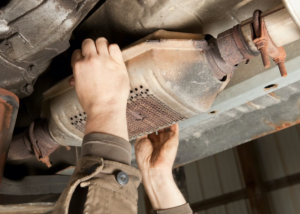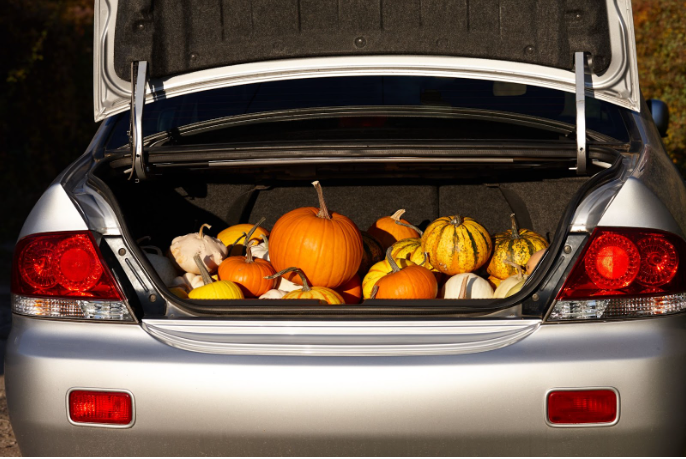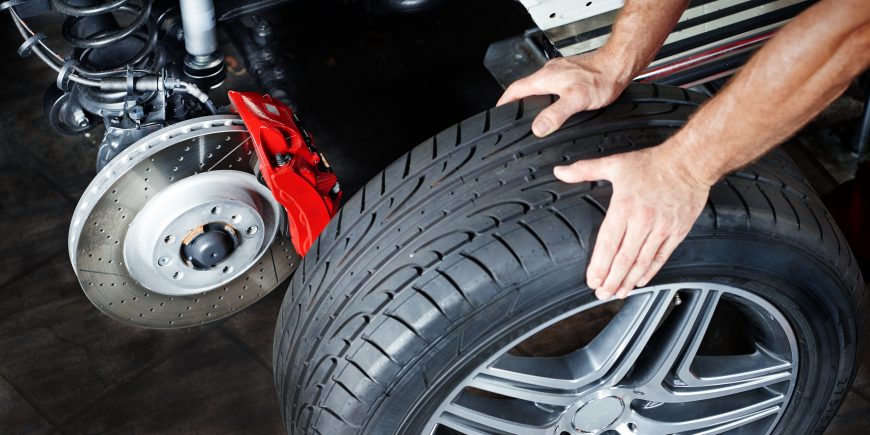5 Common Reasons For A Malfunctioning Car A/C System
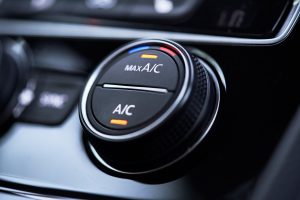
5 Common Reasons for a Malfunctioning Car A/C System
As the summer months approach and temperatures rise, a properly functioning car air conditioning (A/C) system is essential. However, A/C systems can sometimes malfunction, causing discomfort and inconvenience for drivers.
A functioning car A/C system is essential for a comfortable driving experience, especially in hot and humid conditions. However, A/C systems can sometimes malfunction, causing discomfort and inconvenience for drivers.
In this article, we will discuss the common reasons for a malfunctioning car A/C system and how it is affected by the weather and agriculture in Fresno County, California.
Importance of A/C System in a Car
A car A/C system serves the purpose of regulating the temperature inside the car, providing a comfortable environment for the driver and passengers. Apart from providing comfort, a car A/C system is also important for safety reasons. A hot and stuffy environment inside the car can lead to drowsiness and fatigue, which can be dangerous for the driver and other passengers.
Common Reasons for A/C System Malfunctioning
There are several reasons why a car’s A/C system can malfunction. Here are the most common reasons:
Low Refrigerant Levels
The refrigerant is a vital component of the A/C system that absorbs heat from the air inside the car and releases it outside. If the refrigerant levels are low, the A/C system will not function properly. Low refrigerant levels can be caused by leaks in the system or simply due to evaporation over time.
Leaking Refrigerant
Refrigerant leaks are a common issue with car A/C systems. Leaks can occur due to damaged or worn-out components, such as the hoses or the compressor. A leak in the A/C system can cause a decrease in refrigerant levels, which will result in poor A/C performance.
Faulty Compressor
The compressor is responsible for compressing the refrigerant and circulating it through the A/C system. If the compressor is faulty, the refrigerant will not be able to circulate properly, leading to poor A/C performance or a complete malfunction.
Electrical Issues
The A/C system is dependent on various electrical components, such as fuses, relays, and switches. If any of these components fail, the A/C system will not function properly. Electrical issues can also lead to short circuits, which can damage other components of the A/C system.
Clogged Condenser
The condenser is responsible for releasing the heat absorbed by the refrigerant. If the condenser becomes clogged, it will not be able to release the heat properly, leading to poor A/C performance. A clogged condenser can be caused by debris or dirt accumulation.
Fresno County and A/C System
Fresno County, California, is known for its hot weather and agriculture, which can have an impact on car A/C systems. Hot weather can put a strain on the A/C system, causing it to work harder than usual, leading to a higher risk of malfunction.
Agriculture can also be a factor, as the dust and debris from fields can clog the condenser and air filter, reducing the efficiency of the A/C system. It is important to keep the A/C system clean and maintained to ensure optimal performance.
How to Avoid A/C System Malfunctioning
Regular maintenance of the car A/C system can help avoid malfunctions and ensure optimal performance. Here are some tips to keep the A/C system in good condition:
- Get the A/C system inspected and serviced regularly by a qualified mechanic.
- Check the refrigerant levels and top-up if necessary.
- Keep the condenser and air filter clean and free of debris.
- Use the A/C system regularly to keep the components lubricated and prevent leaks.
- Park the car in a shaded area to reduce the strain on the A/C system.
By following these tips, you can avoid A/C system malfunctions and ensure a comfortable driving experience, even in hot and humid conditions.
Conclusion
A malfunctioning car A/C system can cause discomfort and inconvenience, especially during hot and humid weather. The common reasons for A/C system malfunctions include low refrigerant levels, leaking refrigerant, faulty compressors, electrical issues, and clogged condensers. Regular maintenance and inspection of the A/C system can help avoid malfunctions and ensure optimal performance.
Come to the capable team of ASE-Certified mechanics and master mechanics at Dick’s Automotive in Clovis, CA, today. Please contact us today and please schedule an appointment via our website. Also, visit us on our Facebook page and get involved in our community!
What Is A Catalytic Converter & How Can I Protect Mine?
Protect Your Catalytic Converter from Theft in California
As an auto repair shop serving the greater Fresno, Ca area, we know how important it is to protect your car. One of the most expensive parts of a car to replace is the catalytic converter, which is why it has become a target for thieves here in California. In this blog post, we’ll discuss what a catalytic converter is and how you can protect yours from theft.
What Is A Catalytic Converter?
A catalytic converter is an exhaust component that reduces your vehicle’s harmful emissions while running. It works as a filter to reduce pollutants like carbon monoxide and nitrogen oxide that can damage air quality and human health. The catalytic converter also helps your engine run more efficiently, making it easier for your car to pass emissions tests.
Why Is Catalytic Converter Theft on the Rise in California?
Catalytic converters are made with precious metals like palladium, platinum, and rhodium—all incredibly valuable materials on the open market.
Thieves have been targeting cars in California because they know they can sell these materials for a high price without doing much work. To make matters worse, replacing a catalytic converter is not cheap; depending on the make and model of the car, it could cost anywhere from $1,000-$3,000 or more!
How Can I Protect My Catalytic Converter From Theft?
Fortunately, there are some steps you can take to help protect your catalytic converter from theft:
- Park your car in well-lit areas when possible; thieves tend to avoid brightly lit places at night.
- If possible, put up security cameras around where you park; this will deter potential thieves since they don’t want their faces caught on camera.
- Install anti-theft devices like wheel locks or steering wheel locks; these make it harder for thieves to remove the part quickly and easily, so they’ll likely move on if they see one in place.
- Have your vehicle regularly serviced at our Clovis auto repair shop; we can inspect the catalytic converter and check its condition so you can catch any problems before they become serious issues.
Protecting Your Catalytic Converter From Theft
At our Clovis auto repair shop, we want our customers to stay safe out on the roads of Fresno County and beyond –that’s why we hope these tips will help keep your car safe from catalytic converter theft!
Remember that parking in well-lit areas, putting up security cameras if possible, installing anti-theft devices like wheel locks or steering wheel locks, and having regular services done at our shop all go a long way towards protecting yourself from potentially expensive repairs down the line! If you have any questions about catalytic converters or other car services, please feel free to reach out! We’d love to hear from you!
Come to the capable team of ASE-Certified mechanics and master mechanics at Dick’s Automotive in Clovis, CA, today. Please contact us today and please schedule an appointment via our website. Also, visit us on our Facebook page and get involved in our community!
The 5 Vehicle Fluids You Need To Know (& 1 Bonus Fluid You Might Not Have Thought About)
Understanding Vehicle Fluids: The Basics
As an auto repair customer, it’s essential to understand the various fluids your vehicle requires, especially in the extreme weather conditions sometimes present in the California Central Valley. Sever heat, surprise rain showers, and dusty agricultural roads all create problems for your vehicle’s fluids.
Without its fluids, your car or truck would not be able to function correctly. Today we will look at the five most common vehicle fluids and one bonus fluid you may have yet to consider.
The 5 Essential Vehicle Fluids
Oil
Oil lubricates the engine and helps keep it cool. It needs to be changed every 3,000-7,000 miles depending on the type of oil used and how you drive. Furthermore, changing the filter is essential and protects your vehicle over time.
Transmission Fluid
Transmission fluid helps with shifting gears, allowing your vehicle to safely transition from first, to second, to third, and so on. If your vehicle has difficulty shifting gears, you may need a transmission fluid flush or refill. Dick’s Automotive is here to help you with both!
Brake Fluid
Brake fluid helps power the brakes to stop your vehicle when needed. Ensure you check your brake fluid regularly, as this can decrease over time and must be refilled before brakes become inoperable or unsafe.
Coolant
Coolant is responsible for keeping your engine cool, so it doesn’t overheat, a critical element in Clovis, CA’s extreme heart. A coolant leak could cause significant damage to your engine if left unattended for too long, so check on this regularly as well.
Power Steering Fluid
Power steering fluid helps make turning much easier in cars and trucks by providing hydraulic pressure to assist in turning the wheel. This should also be checked as you may need to “top it up” occasionally for optimal performance from your vehicle’s power steering system.
Bonus Fluid: Windshield Washer Fluid
Windshield washer fluid is usually filled into a separate reservoir near where you fill up with windshield wiper blades for your car or truck’s windshield wipers system and helps clear away dirt, mud, and debris from the windshield when activated with a switch inside of the cabin of the vehicle. Keeping windshield washer fluid topped off will ensure you always have clean visibility out of the front window while driving!
Let Dick’s Automotive in Clovis, CA, Help You With Your Vehicle’s Fluids
Knowing how to identify each of these fluids is important if you own a car or truck because it allows you to spot any problems early before they become more serious issues down the line or cause any dangerous situations while driving due to a lack of proper maintenance on any one of these fluids!
Make sure that all these essential fluids are always checked regularly and kept topped up where necessary so that your car runs smoothly and safely! Dick’s Automotive help ensure all of these fluids are appropriately maintained during servicing appointments!
Visit the incredible team of ASE-Certified mechanics and master mechanics at Dick’s Automotive in Clovis, CA, today. Please contact us today and please schedule an appointment via our website. Also, visit us on our Facebook page and get involved in our community!
Why Tire Tread Depth Is Important For Safe Driving
The Benefits of Proper Tire Tread Depth
As a car owner, you know that your tires play a crucial role in your vehicle’s performance. But did you know that the tread depth of your tires can significantly affect your safety while driving? In this blog, we’ll explore the role of tire tread depth in handling and performance and provide tips on properly caring for your tires to ensure optimal safety on the road, all from the perspective of automotive professionals. So let’s get started!
What Is Tire Tread Depth?
Tire tread depth is the depth of grooves, or “tread,” that are visible in your tire’s rubber surface. The peaks and valleys between the higher and lower parts of the rubber; that’s what we mean when we say tread!
These grooves help disperse water and provide traction between the tire and the road, which improves handling and braking performance in wet weather conditions. The deeper the groove, the more effectively it can disperse water and provide traction. This is why maintaining proper tire tread depth is so important for safe driving.
Why Is Tire Tread Depth Important For Safety?
Adequate tire tread depth helps keep your vehicle stable on wet roads, especially when turning or braking suddenly, by providing better traction between the road surface and the tires. If your tires have low tread, they may not be able to grip the road as effectively, leading to reduced control over steering and braking.
Low tire tread increases the risk of hydroplaning or skidding off-road in wet weather conditions. Moreover, low tire tread can lead to poor fuel economy because your engine has to work harder to move a car with low tread than one with sufficient tread depth.
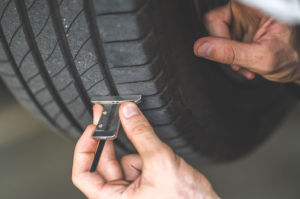
How To Identify Low Tire Tread Depth?
You can identify low tire tread by using a penny test or a specialized tool called a “tire gauge.” To perform a penny test, insert a penny into several points across each tire’s groove with Lincoln’s head facing down towards the groove; if you can see all of Lincoln’s head, then it’s time for new tires!
If you don’t have access to a penny, using a “tire gauge” will also help you measure tire pressure accurately as well as identify if any of your tires are wearing down too much due to improper inflation levels or frequent use over long distances at higher speeds on highways/motorways etc. The recommended minimum is 2/32 inch (1 mm) of remaining tread depth across all four tires – you should replace anything less than this as soon as possible for optimal road safety.
How Do You Care For Your Tires’ Tread?
Properly inflated tires are essential for ensuring optimal performance and longevity. Each tire has it’s own pressure limits, and you can usually find that inside the side of your driver’s door, on a sticker. Additionally, ensure that all four tires are rotated regularly (every three months or after 1-2,000 miles), so they wear evenly.
This will help maintain their overall performance/life span over time without having any side effects such as premature wear & tear due to excessive loading/movement on one side only etc. An alignment check every six months will help reduce uneven tire wear due to misalignment problems caused by rogue potholes etc.
Why You Want A Professional To Help You Care For Your Tires
It is important to have a professional help you care for your tires because they have the training and expertise to properly inspect and care for your tires, the tools and equipment to do the job efficiently and accurately, and can ensure that your tires are in good condition for safety on the road.
Additionally, a professional can save you time and effort by taking care of the tire care process for you. Overall, seeking the help of a professional to care for your tires can provide peace of mind, ensuring that your tires are ready to handle the demands of the road.
Establishing regular service intervals with a trusted auto repair center will help ensure your tires stay healthy and safer for longer. Tread depth is important for a myriad of reasons, and you don’t want to overlook the safety basics when on the road.
Visit the incredible team of ASE-Certified mechanics and master mechanics at Dick’s Automotive in Clovis, CA, today. Please contact us today and please schedule an appointment via our website. Also, visit us on our Facebook page and get involved in our community!
6 Common Reasons Your Check Engine Light Comes On
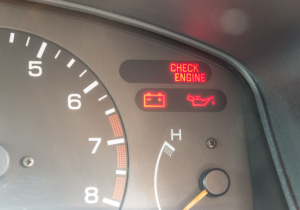
What Causes Your Check Engine Light to Come On?
The check engine light is one of the most common indicators of something wrong with your car. But what does it mean when it comes on? Let’s take a look at six of the most common ones, so you can know what to look and listen for in the future.
Loose or Faulty Gas Cap
A loose or faulty gas cap is one of the easiest causes of a check engine light coming on. The gas cap is designed to seal up your fuel tank and keep the pressure inside, which helps prevent fuel from evaporating and keeps your car running more efficiently. If you notice that your gas cap isn’t screwed in all the way, or if you detect any cracks or other signs of damage, you should replace it as soon as possible.
Incorrectly Installed Air Filter
The air filter in your car helps prevent dirt and debris from getting into your engine, but if it’s not installed correctly, then it won’t be able to do its job properly. If you recently replaced an air filter, make sure it was put back in correctly; otherwise, your check engine light may come on due to poor airflow.
Faulty Oxygen Sensor
Your oxygen sensor measures how much oxygen is present in the exhaust fumes produced by your car’s engine. If this sensor goes bad, then it can cause a whole host of problems, including reduced fuel efficiency and increased emissions – which could trigger the check engine light to come on. In this instance, you’ll need to have your oxygen sensor replaced as soon as possible.
Old & Faulty Spark Plugs
Spark plugs help ignite the fuel in your car’s combustion chamber, while spark plug wires help carry electricity from the ignition system to those spark plugs. Over time, these parts can wear down and cause misfires, leading to a check engine light coming on. Have these parts inspected regularly by a qualified mechanic so any worn-out parts can be replaced before they cause major issues with your vehicle.
Failing Catalytic Converter
Your catalytic converter helps reduce harmful emissions produced by your car’s exhaust system by converting them into less toxic substances before they’re released into the atmosphere. If this part fails, it can cause excessive emissions, which can trigger the check engine light to come on, so you’ll need to have it replaced as soon as possible if that caused the issue in the first place.
Bad Mass Air Flow Sensor
The mass airflow sensor measures how much air enters your vehicle’s engine and sends that information back to the computer so it can adjust accordingly for optimal performance. If this sensor fails, then it could lead to decreased performance and increased emissions—both of which could trigger a check engine light warning signal.
No one likes seeing their check engine light come on, but luckily there are usually simple solutions to fix whatever caused it in the first place! Whether you need a new gas cap, spark plug wires, or a catalytic converter replacement – be sure to take action immediately so any potential problems don’t worsen over time! For auto repair customers dealing with this issue, don’t hesitate to reach out for help when needed!
A certified professional will know exactly what needs doing for a quick resolution without compromising safety or reliability!
Visit the incredible team of ASE-Certified mechanics and master mechanics at Dick’s Automotive in Clovis, CA, today. Please contact us today and please schedule an appointment via our website. Also, visit us on our Facebook page and get involved in our community!
5 Essential Vehicle Maintenance Tips From The Pros
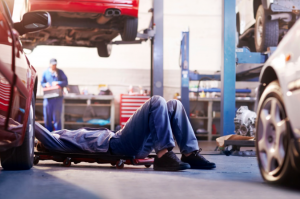
Auto Maintenance Tips You Need To Know
Winter is the perfect time to take your vehicle in for some much-needed TLC. We asked our auto repair pros to weigh in on their essential maintenance tips to keep your car running all season long. Here are their top five recommendations!
1. Check Your Tire Pressure
This one is quick and easy to do yourself, and it can make a big difference in how your car handles on the road. Be sure to check your owner’s manual for the correct tire pressure for your vehicle. You can find this information on a sticker inside the driver’s side door or on the glove box door.
2. Get an Oil Change
It’s important to change your oil every 3,000-5,000 miles or according to your manufacturer’s recommendations, whichever comes first. This will help keep your engine running smoothly and prevent a build-up of sludge and other contaminants.
3. Inspect Your Brakes
If you notice any strange noises or vibrations when you brake, it’s time to have them checked out by a professional. It’s also a good idea to have your brakes inspected at least once a year to ensure they are in good working condition.
4. Flush Your Cooling System
Over time, rust and other contaminants can build up in your cooling system, which can lead to engine problems. Flushing your system and changing your antifreeze will help keep your engine running cool, even on the hottest summer days.
5. Check Your Battery
Cold weather can be tough on batteries, so it’s a good idea to have yours checked before summer begins. If it’s been over three years since you’ve replaced your battery, now is a good time to do so.
These are just a few essential maintenance tips to keep in mind this summer. For more detailed information about your vehicle, consult your owner’s manual or bring it in for service at Dick’s Automotive. Our experienced technicians would be happy to answer any questions you may have about car care!Meet the incredible team of ASE-Certified mechanics and master mechanics at Dick’s Automotive in Clovis, CA, today. Please contact us today and please schedule an appointment via our website. Also, visit us on our Facebook page and get involved in our community!
Reflecting On 2022 & How To Prepare Your Vehicle For The New Year

Preparing our Vehicle For 2023 & Beyond
As we say goodbye to 2022 and reflect on everything it brought, let’s consider how best to welcome a new year. It’s time to start thinking about what the future holds. And, while we can’t predict the future, there are some things we can do to prepare for it. Just like you want to ensure you have a clean business or home, now’s the time to do some near year cleaning, inside and out!
One of those things is preparing our vehicles for the upcoming year. Here are some tips on how to do just that.
10 Steps To Help You Prepare Your Vehicle For The New Year
- Check your vehicle’s fluids and fill them as needed. This includes engine oil, windshield washer fluid, power steering fluid, brake fluid, and coolant.
- Inspect your vehicle’s tires and replace them if necessary. Check the air pressure in your tires and fill them up as needed.
- Inspect your vehicle’s brakes and replace them if necessary.
- Take your vehicle in for an annual tune-up. This is a good time to have your mechanic check for any potential problems that may need fixing.
- Get your vehicle’s emissions tested (if applicable).
- Wash and wax your vehicle regularly to protect the paint job.
- Keep your vehicle’s interior clean and free of debris. This includes removing trash and vacuuming regularly.
- Organize your vehicle’s emergency kit and restock it as needed. Your emergency kit should include a first-aid kit, jumper cables, a flashlight with extra batteries, a blanket, snacks, water, flares or reflective triangles, and a basic toolkit including a screwdriver, pliers, and a wrench set.
- Purchase roadside assistance if you don’t already have it.
- Make sure you have all the documents you need in order: registration, proof of insurance, etc.”
Make Dick’s Automotive Your Partner In Auto Repair For 2023
So, take some time to reflect on 2022, the good and the bad, and consider implementing some of the ideas in this blog. Following these simple tips, you can help ensure your vehicle is ready for whatever 2023 has in store!
Meet the incredible team of ASE-Certified mechanics and master mechanics at Dick’s Automotive in Clovis, CA, today, and let us help you and your vehicle meet 2023 prepared. Please contact us today and please schedule an appointment via our website. Also, visit us on our Facebook page and get involved in our community!
How To Get Your Vehicle Ready For Thanksgiving Travel
Prepare Your Vehicle For Thanksgiving
Happy Thanksgiving season Central Valley! Fall is in full swing, pumpkins are out, and apple cider sits brewing on the stove. Are you traveling for the holidays? Don’t forget to get your vehicle serviced before you hit the road! Here are a few tips to get your car, truck, or SUV ready for Thanksgiving travel.
Service Your Engine
If your engine isn’t running smoothly, you’ll have a long (and frustrating) trip. Be sure to get a tune-up before you hit the road this Thanksgiving. This simple service will help ensure that your engine runs at peak efficiency, saving you time and money on the road.
Engine service and tune-ups can include fluid exchange, spark plug service, and so much more. Visit your trusted auto repair center to learn more!
Check Your Tires
Make sure your tires are properly inflated and have enough tread. If not, you may find yourself dealing with a flat tire or blowout at the worst possible time. Getting new tires before you travel is always a good idea; just be sure to give yourself enough time to break them in before hitting the road.
Pack an Emergency Kit
You never know when you might need some extra oil, antifreeze, jumper cables, or even snacks and drinks. Be prepared for anything by packing an emergency kit for your Thanksgiving travels. Don’t forget a first-aid kit, too!
Visit Dick’s Automotive To Prepare For Holiday Travel
Don’t let car trouble ruin your holiday plans! Be sure to service your before you hit the road this Thanksgiving. From tune-ups and tire checks to packing an emergency kit, following these simple tips will help ensure that you have a safe and enjoyable trip. Happy travels!
Come to Dick’s Automotive in Clovis, CA, and our team of ASE-Certified auto mechanics will help prepare your vehicle for holiday travel! Please contact us today and please schedule an appointment via our website. Also, visit us on our Facebook page and get involved in our community!
3 Ways to Get Your Brakes Ready for Winter in the California Central Valley
Winterizing Your Brakes In California
Even though it doesn’t typically snow in the California Central Valley, that doesn’t mean your car’s brakes don’t have to work extra hard during the winter months. With all of the rain and slick roads, you need to ensure that your brakes are in top condition to avoid any accidents. Here are three ways to prepare your brakes for winter in the California Central Valley.
Check your brake pads
If your brake pads are worn down, they will not be able to provide the same level of stopping power as they would if they were new. This is especially true in wet or icy conditions. To check your brake pads, remove the wheels and visually inspect them. If they are more than 1/4 inch thick, they are still good. If they are thinner than that, they need replacing.
Check your brake fluid levels
You should check brake fluid levels regularly, but it’s especially important to do so in the winter months. If your brake fluid levels are low, it will be harder for your brakes to stop properly. To check your brake fluid levels, open the hood of your car and locate the reservoir. The level should be between the “min” and “max” lines on the side of the reservoir. If it’s not, add more fluid until it reaches those lines.
Clean your brakes and wheels regularly
One way to keep your brakes in good condition is to clean them regularly. This will remove any dirt or grime that may have built up on them over time. It’s also important to clean your wheels since they can get just as dirty as your brakes.
To clean your brakes, remove the wheels and use a brake cleaning spray to clean both the pads and discs. To clean your wheels, simply use a wheel cleaner and a brush designed for cleaning wheels. These can be found at most auto parts stores.
Following these three simple tips can help ensure that your brakes are ready for winter driving conditions in the California Central Valley. Remember to check your brake pads, check your brake fluid levels, and clean your brakes and wheels regularly!
Get ahead of the cold and visit Dick’s Automotive today, and we’ll help winterize your vehicle’s brakes! Please contact us today, and please schedule an appointment via our website. Also, visit us on our Facebook page and get involved in our community!
3 California Central Valley “Must Do’s”

The California Central Valley is a hidden gem!
If you’re like most people, when you think of California, you think of the beaches and Hollywood. But there’s so much more to this amazing state than that! The Central Valley is an excellent example of that!
The Central Valley is full of charming small towns, delicious food and wine, and stunning natural scenery. If you’re looking for an off-the-beaten-path California experience, the Central Valley is definitely worth exploring. So if you’re in the area, be sure to check out some of these great places!
Three things to do in California’s Central Valley!
- Visit Yosemite National Park – With towering waterfalls, ancient sequoias, and miles of hiking trails, Yosemite is a must-see for any nature lover or road trip enthusiast. The drive there from Fresno is incredible and one of the more dramatic scenic day trips you are likely to take.
- Drive down the Kings Canyon Scenic Byway – This winding road takes you through some of the most beautiful scenery in the state. We lie to think of this as our central valley hidden gem when it comes to scenic drives and incredible day trips. Just google it for yourself and see what this amazing area has to offer!
- Take a walk through downtown Fresno – Fresno may not be the first city that comes to mind when you think of California, but its downtown area has a lot to offer. If you’re looking for history, Fresno’s been around since 1856 and is full of well-preserved historical buildings. For a bite to eat, there are plenty of restaurants serving everything from American classics to authentic Mexican food. And if you’re looking for a place to grab a drink, several bars are offering local craft beer and wine. So whether you’re looking for a day of shopping or a night on the town, Fresno’s downtown has something for everyone.
How do I get my vehicle ready for a trip in the California Central Valley?
If you’re planning a trip to the California Central Valley, there are a few things you’ll need to do to get your vehicle ready.
First – check your tire pressure and tread depth. The Central Valley is known for its hot weather; the last thing you want is to get a flat tire in the middle of nowhere.
Second – make sure you have plenty of coolant and oil. The heat can be tough on engines, so keeping them in good condition is important.
Finally – pack plenty of water and snacks. The Central Valley is a beautiful place, but it can be very remote in spots. It’s always good to be prepared in case you get stranded. With a little preparation, you can have a safe and enjoyable trip to the Central Valley.
So, if you’re looking for a fun day trip or want to explore some new places, the California central valley has plenty to offer. Be sure to check out Dick’s Automotive in Clovis for all your vehicle needs – we’ll take care of you!
Come to Dick’s Automotive today, and we’ll ensure you and your family have the best trip possible! Please contact us today, and please schedule an appointment via our website. Also, visit us on our Facebook page and get involved in our community!
